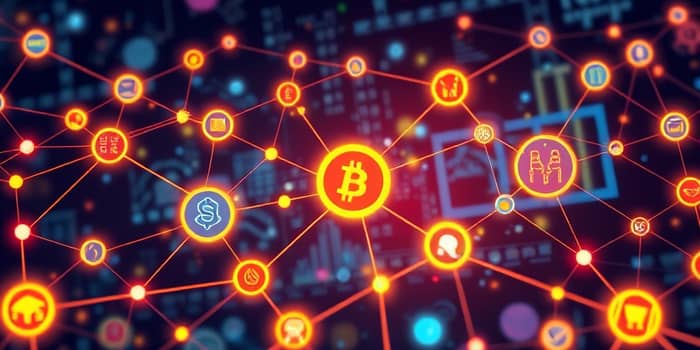Blockchain technology has transcended its origins in cryptocurrency to become a transformative force across industries. Organizations worldwide are leveraging its core strengths—transparency, security, automation, and immutability—to reimagine processes and services.
From supply chain tracking to digital identity, blockchain’s reach is expanding at an unprecedented pace, unlocking new possibilities for innovation and efficiency.
The Foundation of Blockchain Technology
At its core, blockchain is a distributed, decentralized digital ledger technology that records transactions in immutable blocks. Each node in the network maintains a copy of the ledger, ensuring that data tampering is virtually impossible without consensus.
Originally conceived to support Bitcoin, blockchain’s ability to provide trustless, peer-to-peer exchanges has inspired a wave of applications far beyond finance.
Key attributes include cryptographic security, transparent auditability, and programmable logic through smart contracts. These features combine to create systems that are resilient, efficient, and resistant to fraud.
Transforming Financial Services and DeFi
Blockchain is revolutionizing how financial institutions operate, cutting transaction times from days to minutes and slashing processing costs.
Decentralized finance (DeFi) platforms use self-executing smart contracts for finance to automate lending, borrowing, and asset management without traditional intermediaries. Users can access loans, yield farming, and decentralized exchanges through permissionless protocols.
Tokenization is another powerful trend: real-world assets like real estate, bonds, and commodities are represented as digital tokens on blockchain networks. Analysts project tokenized assets will exceed $600 billion in market value by 2030, and more banks are preparing to issue digital securities by 2025.
Enhancing Supply Chain Transparency
Global supply chains face challenges such as counterfeiting, delays, and lack of visibility. Blockchain addresses these by offering end-to-end traceability and transparency from origin to consumer.
By recording each step of a product’s journey—harvest, processing, shipping, and retail—companies can rapidly identify points of failure and ensure quality control.
- Fraud and error reduction: Immutable records deter tampering.
- Rapid outbreak response: Locate contaminated food in hours.
- Enhanced consumer trust: Verify product authenticity instantly.
Major players like Walmart and IBM Food Trust showcase blockchain’s ability to pinpoint the source of foodborne illnesses, improving safety and reducing recall times from weeks to hours.
Revolutionizing Healthcare
Healthcare systems handle sensitive patient data, medical records, and pharmaceutical supply chains. Blockchain safeguards this ecosystem by enabling secure, permissioned access and immutable audit trails.
Pharmaceutical companies leverage blockchain to combat counterfeiting—tracking batch numbers and packaging through every distribution channel. Meanwhile, patients gain control over their records, granting access to providers via cryptographic keys.
Interoperability is enhanced as health institutions adopt shared ledgers, reducing administrative overhead and improving patient outcomes through timely data exchange.
Empowering Government and Public Services
Governments worldwide are adopting blockchain to streamline operations, increase transparency, and reduce corruption.
Estonia’s e-Residency program uses blockchain-backed digital identities to deliver secure government services to global citizens. Similarly, Canada tracks public grants on distributed ledgers to ensure funds are allocated correctly.
- Secure voting systems: Blockchain-based ballots prevent tampering.
- Land registry transparency: Immutable property records reduce disputes.
- Efficient welfare distribution: Real-time tracking of benefits.
These initiatives demonstrate how public trust can be strengthened through transparent donation tracking for donors and accountable governance.
Innovations in IoT, Identity, and Beyond
The convergence of blockchain with the Internet of Things (IoT) creates secure, automated ecosystems. Connected devices exchange data directly on the ledger, fostering trust and reducing single points of failure.
- Device authentication: Prevent unauthorized access.
- Usage history: Immutable logs for maintenance and troubleshooting.
- Automated settlements: Micropayments between machines via smart contracts.
In digital identity, blockchain delivers secure digital identity management systems that eliminate centralized data repositories vulnerable to hacks. Users maintain control over personal information, sharing only what’s necessary for each transaction.
Challenges and Future Outlook
Despite its promise, blockchain faces hurdles: scalability constraints, high energy consumption in proof-of-work networks, and complex regulatory landscapes.
Integration with legacy systems remains a technical challenge, while smart contract vulnerabilities demand rigorous auditing and AI-assisted verification. Nevertheless, advances in consensus algorithms and layer-two scaling solutions are mitigating these concerns.
Regulatory clarity is improving. New accounting standards require companies to disclose digital asset holdings, fostering transparency and broader institutional adoption.
Conclusion: A Decentralized Tomorrow
Blockchain’s evolution beyond cryptocurrency is reshaping industries by delivering AI-driven conditional logic and verification and redefining trust. From finance and supply chain to healthcare and government, decentralized ledgers offer a new paradigm for secure, efficient, and transparent operations.
As technologies converge and regulations mature, blockchain is poised to unlock unprecedented value, empowering individuals and organizations to collaborate with confidence in a decentralized future.
References
- https://www.simplilearn.com/promising-uses-of-blockchain-article
- https://appinventiv.com/blog/blockchain-beyond-cryptocurrencies/
- https://builtin.com/blockchain/blockchain-applications
- https://technology.online.city.ac.uk/blogs/blockchain-beyond-bitcoin-applications-and-implications-for-blockchain-technology/
- https://www.bpm.com/insights/blockchain-and-digital-assets-outlook-2025/
- https://www.investopedia.com/terms/b/blockchain.asp
- https://www.secureworld.io/industry-news/blockchain-beyond-crypto-cybersecurity










